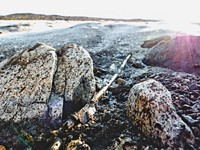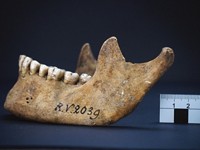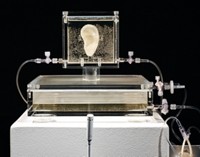Advertisement
Grab your lab coat. Let's get started
Welcome!
Welcome!
Create an account below to get 6 C&EN articles per month, receive newsletters and more - all free.
It seems this is your first time logging in online. Please enter the following information to continue.
As an ACS member you automatically get access to this site. All we need is few more details to create your reading experience.
Not you? Sign in with a different account.
Not you? Sign in with a different account.
ERROR 1
ERROR 1
ERROR 2
ERROR 2
ERROR 2
ERROR 2
ERROR 2
Password and Confirm password must match.
If you have an ACS member number, please enter it here so we can link this account to your membership. (optional)
ERROR 2
ACS values your privacy. By submitting your information, you are gaining access to C&EN and subscribing to our weekly newsletter. We use the information you provide to make your reading experience better, and we will never sell your data to third party members.
Education
Newscripts
Fossil-Infused Beer, 75 Million-Year-Old Turtle Bones
by Marc S. Reisch
April 28, 2014
| A version of this story appeared in
Volume 92, Issue 17

If you’re an aficionado of craft beers made from ancient relics, then you will be happy to know that Lost Rhino Brewing in Ashburn, Va., is cooking up 650 gal of beer made with yeast teased from a 35 million-year-old whale fossil. It should be on tap at the end of May.
To be known as Bone Dusters Paleo Ale, the thirst-quenching mind-bender is the brainchild of two scientists: Jason Osborne and Jasper Akerboom. Osborne, a mechanical engineer at the Janelia Farm Research Campus of Howard Hughes Medical Institute, was looking for a way to get people to talk about science while throwing back a cold one. As an amateur paleontologist and cofounder of the fossil-hunting group Paleo Quest, he hit on the idea of trying to recruit some yeast residing on fossils to make the beer.
For that task he enlisted Akerboom, a microbiologist at Janelia Farm, who has a passion for home-brewed beer made with the wild yeast he collects. Akerboom swabbed Paleo Quest’s collection in search of yeast with just the right stuff for making a good brew. He found it hanging on to a protocetid whale fossil: a yeast variant he has named Saccharomyces cerevisiae var. protocetus after the whale.
Oddly, Osborne and Akerboom already have some competition from a brewer who claims to have captured 45 million-year-old yeasts from the gut of an amber-enrobed bee. In 2008, medical mycologist and Fossil Fuels Brewing Co. co-owner Raul J. Cano launched a line of beer from his Manteca, Calif., brewery using the antediluvian organisms. Osborne questions the likelihood of reviving 45 million-year-old yeast, but he says it sounds “pretty damn cool.”
Still, such a yeasty froth of beer-brewing possibilities makes for a heady mix. In September, Akerboom plans to go full-time at Lost Rhino and hopes one day to have his own business: JasperYeast.
Analytical chemist Gregory Harpel doesn’t have a bone to pick with anyone, and he wasn’t having a cold one when he found a turtle bone fossil that was missing for nearly 200 years. Like Osborne, he is also an amateur paleontologist.
Looking for fossilized shark teeth along a creek in Monmouth County, N.J., Harpel says he saw an odd protuberance in the grass. He thought it looked like a rock at first, but he went to examine at it anyway. “It wasn’t a ‘Lord of the Rings’ moment,” he says, referring to the ring-finding scene in the blockbuster fantasy movies based on the works of author J. R. R. Tolkien. “But it had the characteristics of a bone.”

So he took the bone to the New Jersey State Museum. There, David Parris, the museum’s curator of natural history, joked that it must be the other half of a limb now at the Academy of Natural Sciences at Drexel University in Philadelphia. First described in 1849 by naturalist Louis Agassiz, the limb at the academy was the only known specimen of a giant sea turtle, Atlantochelys mortoni. As it turns out, Parris was right. The two halves were a match.
The discovery gives scientists more information about A. mortoni than they had before. With the complete limb, they figure the animal, which roamed Earth 75 million years ago, was 10 feet from tip to tail, making it one of the largest sea turtles ever known.
Harpel donated the bone to the New Jersey museum. “I didn’t want it sitting in my sock drawer,” he says.
Marc Reisch wrote this week’s column. Please send comments and suggestions to newscripts@acs.org.





Join the conversation
Contact the reporter
Submit a Letter to the Editor for publication
Engage with us on Twitter